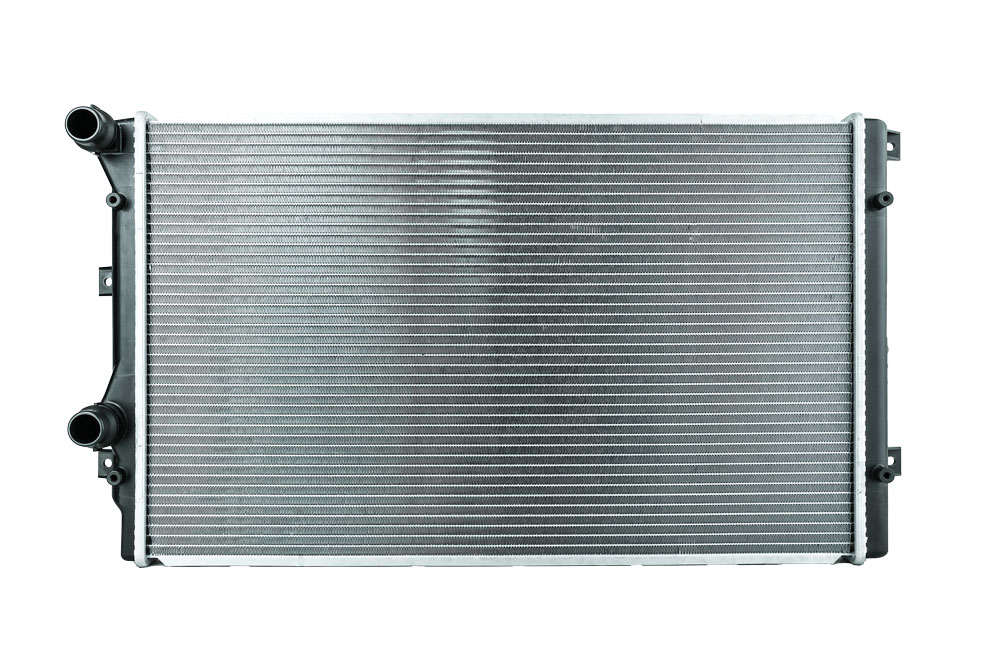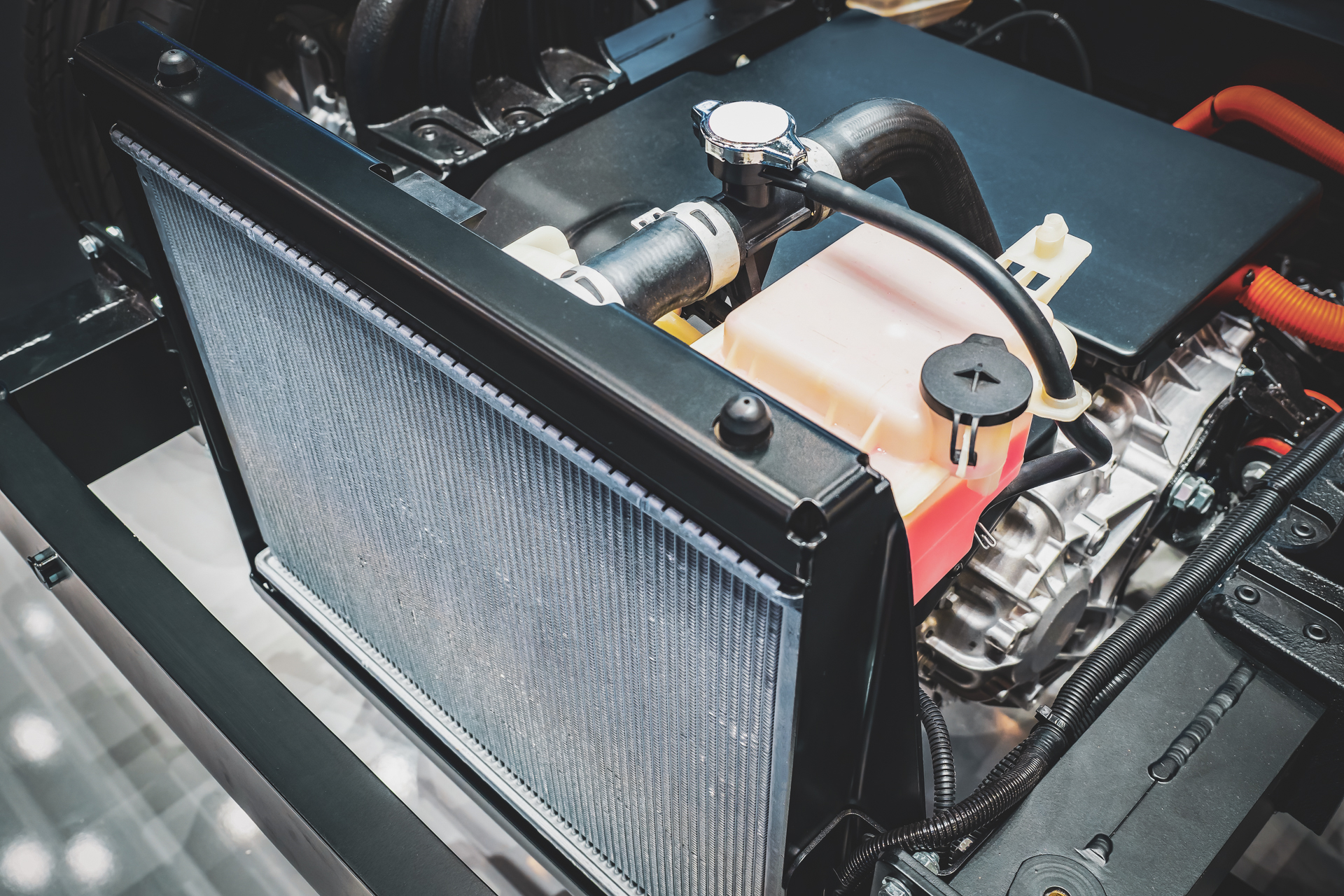Radiator Service & Repair
Radiator Service & Repair

Radiator & Cooling System
We have all seen the car on the side of the road with steam coming out from under the hood, and some of us have been those people. No one wants to be the one stranded on the side of the road with their vehicle overheating, but it can happen, and a common cause for this is a radiator or coolant system malfunction.
If you have ever wondered what the purpose of the radiator is, simply put, it is the module in your vehicle that keeps the engine cool.
The radiator is not the only component that helps keep your vehicle’s engine cool. Your vehicle’s cooling system is made up of many different parts, including liquid coolant, hoses, a fan, and a thermostat. All these items must work together to ensure your car, truck, or SUV keeps cool and has a functioning engine.
How Does a Radiator Work?
The radiator helps eliminate this extreme heat by working with the rest of the cooling system. The coolant travels through the hoses from the radiator through the engine and back to the radiator. The coolant absorbs the heat from the engine, and when it returns to the radiator, the radiator releases the heat from the coolant to the outside air. Cool air is then sucked into the radiator through the grill of the vehicle, which helps push the hot air out. When the vehicle is not moving, the cooling systems fan will help move the air. This process continues a loop of the coolant passing through the radiator to the engine and back to the radiator, releasing the heat to the outside air. This helps keep your vehicle from overheating.

Components of a Radiator

- The Core The core is the main component of your radiator. It is a large block consisting of tubes and fins. Coolant tubes are inside the core, and the metal fins are placed outside of the core. The coolant flows through the core and releases the heat that it gained while going through the engine. It then releases this heat and the radiator cools it before the coolant makes another circulation through the engine.
- The Pressure Cap The pressure cap does exactly what it says, it seals the cooling system, making sure that it continues to stay pressurized. It is vital to keep this pressure for the radiator to continue working properly. Without the cooling system being properly pressurized, the coolant can boil and overflow.
- Inlet Tank The outlet and inlet tanks are important components of the radiator. Once the coolant has circulated through the engine, the outlet and inlet tank sends the coolant back to the radiator. The liquid is extremely hot when it is flowing through the outlet and inlet tanks. Most modern vehicles use plastic on this component. Even though these plastics are extremely durable, they can become brittle and crack over time, causing a leak.
- Outlet Tank The outlet and inlet tanks are important components of the radiator. Once the coolant has circulated through the engine, the outlet and inlet tank sends the coolant back to the radiator. The liquid is extremely hot when it is flowing through the outlet and inlet tanks. Most modern vehicles use plastic on this component. Even though these plastics are extremely durable, they can become brittle and crack over time, causing a leak.
- Cooling Fins The cooling fins act as a conductor to transfer the heat from the tubes to the air flowing through the radiator. Damage to the cooling fins can reduce the efficiency of your radiator.
- Coolant The coolant is not a mechanism within the radiator but rather the fluid that flows through the radiator and to the engine and then back to the radiator. This fluid helps move the heat away from the engine and to the radiator where that heat is released into the air.

Radiator Failure and Preventative Maintenance
The most common cause of radiator failure is damage. If there is ever any damage to any of the different components in the radiator or the cooling system, there is a chance for radiator failure. Another cause for radiator failure is low or expired coolant.
It is important to make sure that your vehicle has sufficient coolant and that it is clean. It is important to always make sure that your car, SUV, or truck has enough coolant. One way to prevent your vehicle from running low on coolant is to make sure that you have the levels checked each time you have an oil change. Your oil change technician will top off the fluids. We do this at Rydell at no cost to you; you don’t even have to ask.
A coolant flush will also help ensure your radiator is performing at its best. Most manufacturers recommend a coolant flush every 60,000 to 100,000 miles with a Dexcool fluid system. The Green System Vehicles recommend a coolant flush every 45,000 miles. As always, we advise you to check your owner’s manual for the best recommendation for the specific make and model of your vehicle. Cooling systems can be hampered by corrosion of the fluids over time and the flush will help alleviate this corrosion. We utilize BG Cooling System Cleaner to help break up the corrosion and deposits. After the flush we will add a BG Super Cool Conditioner to the new coolant to help maintain a clean and fluid coolant. At Rydell we use a flush machine to help with this process. A coolant flush will typically take up to two to three hours depending upon the make and model of your vehicle. We will also inspect all hoses and connections during the flush to make sure there are no leaks.
In Conclusion
At Rydell, we want to make sure that your vehicle is running at top performance. That is why it is important that your radiator and cooling system is working correctly. If you notice that your vehicle seems to be overheating, then let one of our certified technicians take a look at your vehicle.
Schedule Radiator Service Today






